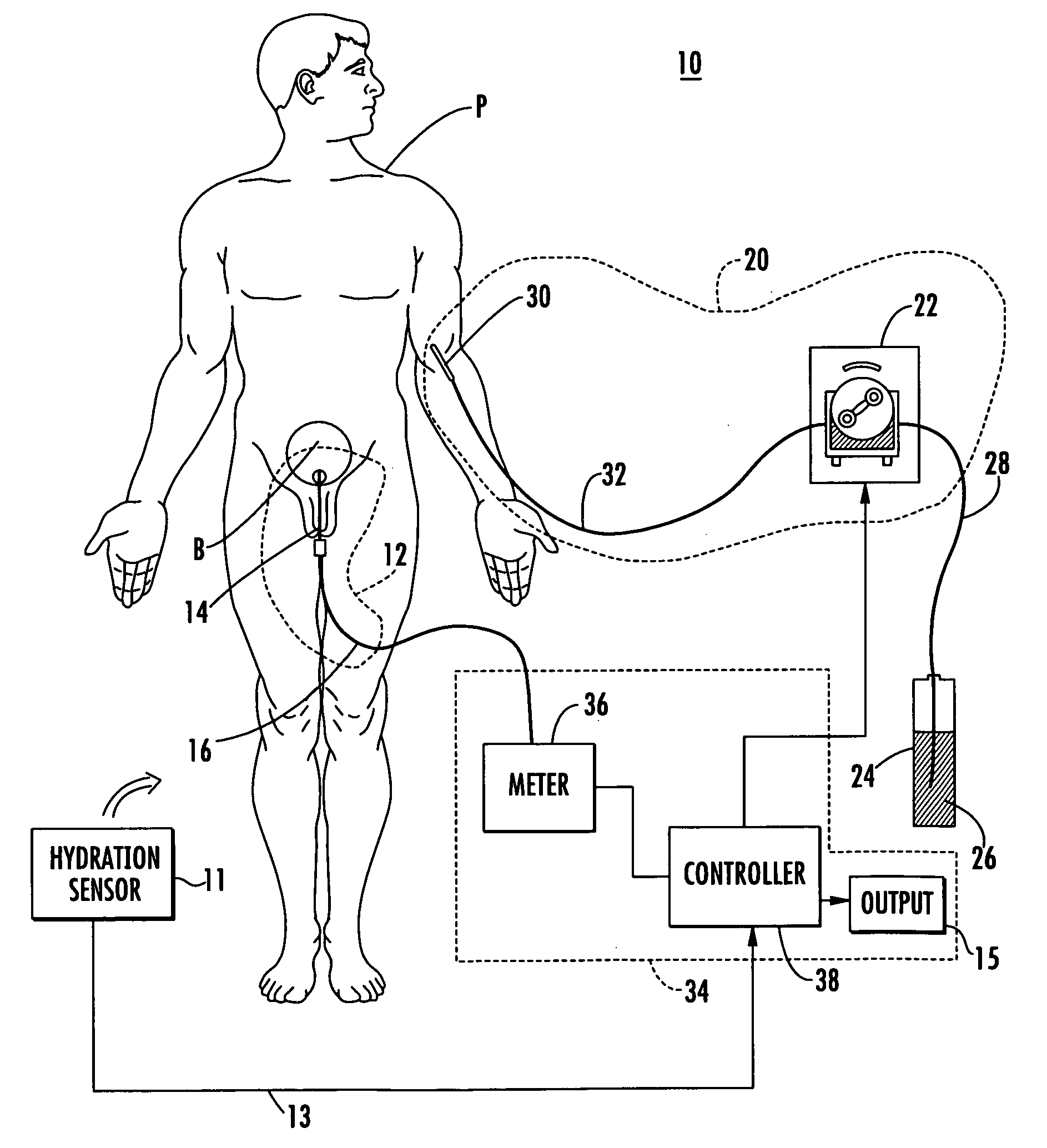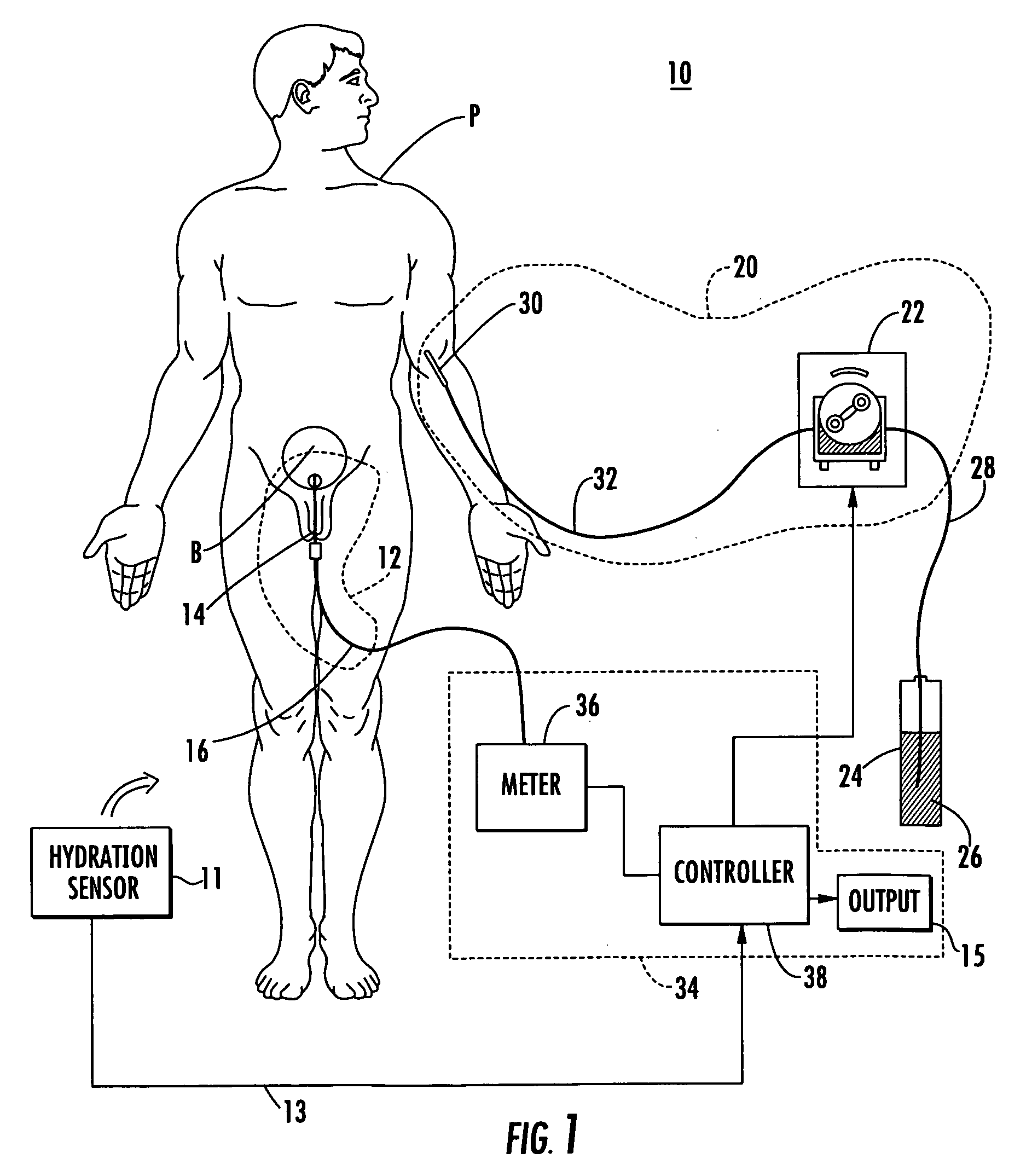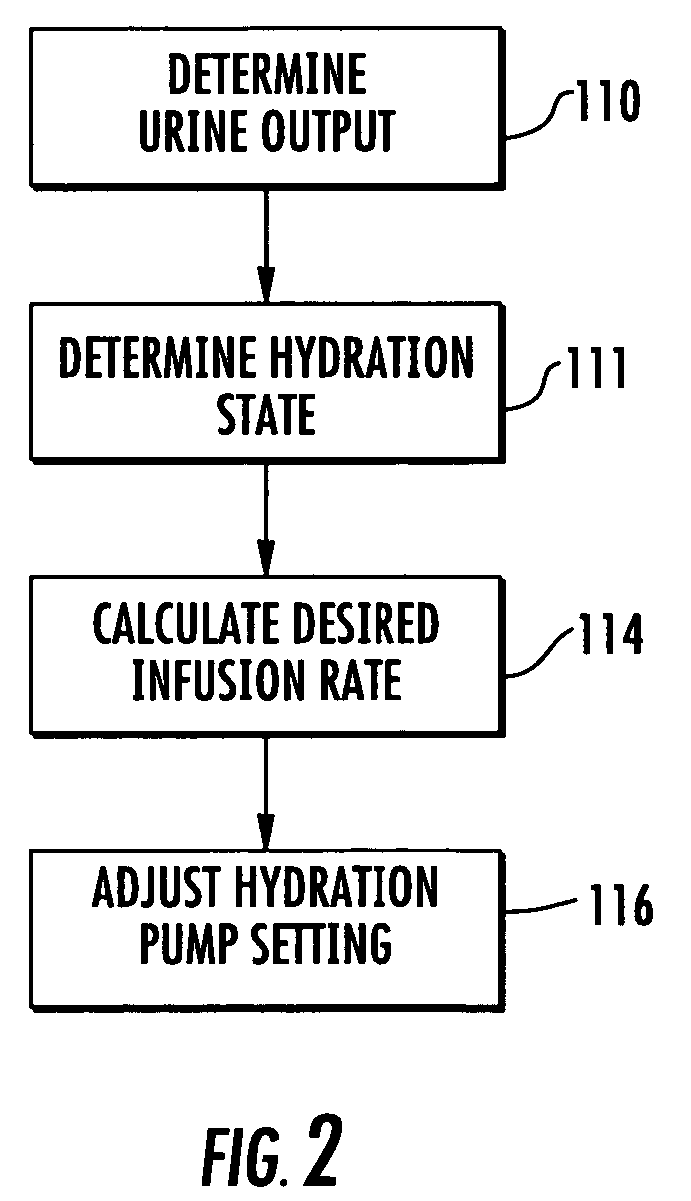Patient hydration system with hydration state detection
a technology for detecting the hydration state of patients, applied in the field of patient hydration system and method, can solve the problems of more prone to medial problems, dehydration of patients, toxic radiocontrast media, etc., and achieve the effects of preventing dehydration, overhydration, and preventing kidney damage in patients
- Summary
- Abstract
- Description
- Claims
- Application Information
AI Technical Summary
Benefits of technology
Problems solved by technology
Method used
Image
Examples
Embodiment Construction
[0057]Aside from the preferred embodiment or embodiments disclosed below, this invention is capable of other embodiments and of being practiced or being carried out in various ways. Thus, it is to be understood that the invention is not limited in its application to the details of construction and the arrangements of components set forth in the following description or illustrated in the drawings. If only one embodiment is described herein, the claims hereof are not to be limited to that embodiment. Moreover, the claims hereof are not to be read restrictively unless there is clear and convincing evidence manifesting a certain exclusion, restriction, or disclaimer.
[0058]Patient hydration system 10, FIG. 1 according to this invention includes urine collection system 12 connected to patient P. Infusion system 20 typically includes an infusion device such as infusion pump 22 (e.g., a peristaltic pump) connected to source 24 of infusion fluid 26 (e.g., saline) by tubing 28. I.V. needle 3...
PUM
 Login to View More
Login to View More Abstract
Description
Claims
Application Information
 Login to View More
Login to View More - R&D
- Intellectual Property
- Life Sciences
- Materials
- Tech Scout
- Unparalleled Data Quality
- Higher Quality Content
- 60% Fewer Hallucinations
Browse by: Latest US Patents, China's latest patents, Technical Efficacy Thesaurus, Application Domain, Technology Topic, Popular Technical Reports.
© 2025 PatSnap. All rights reserved.Legal|Privacy policy|Modern Slavery Act Transparency Statement|Sitemap|About US| Contact US: help@patsnap.com



